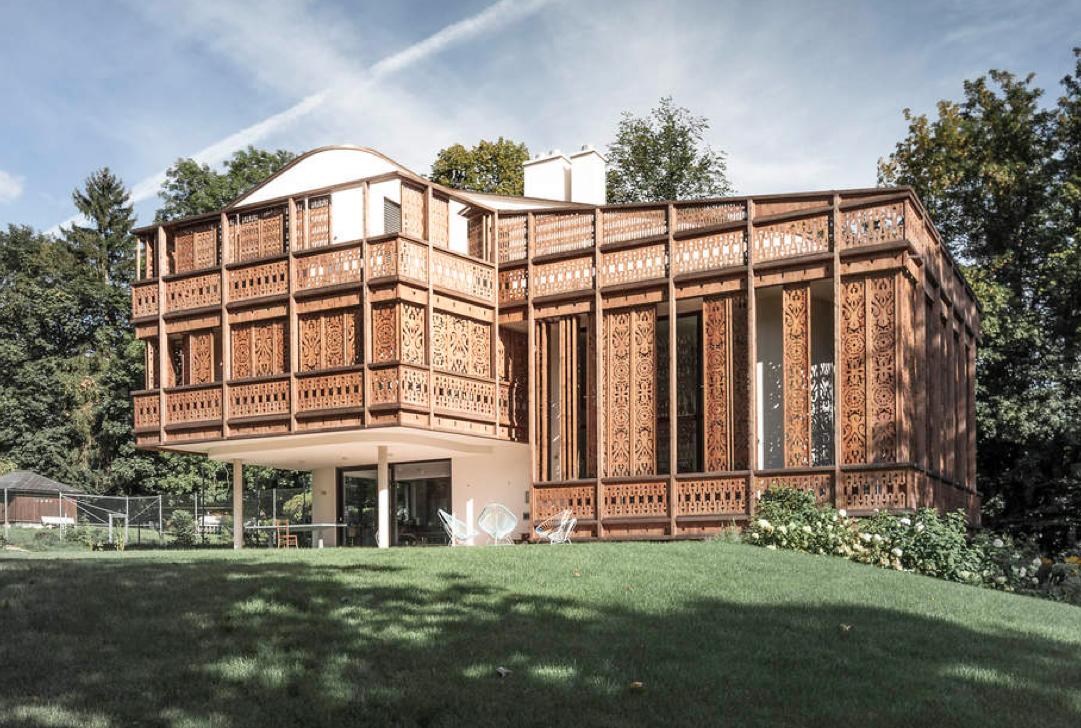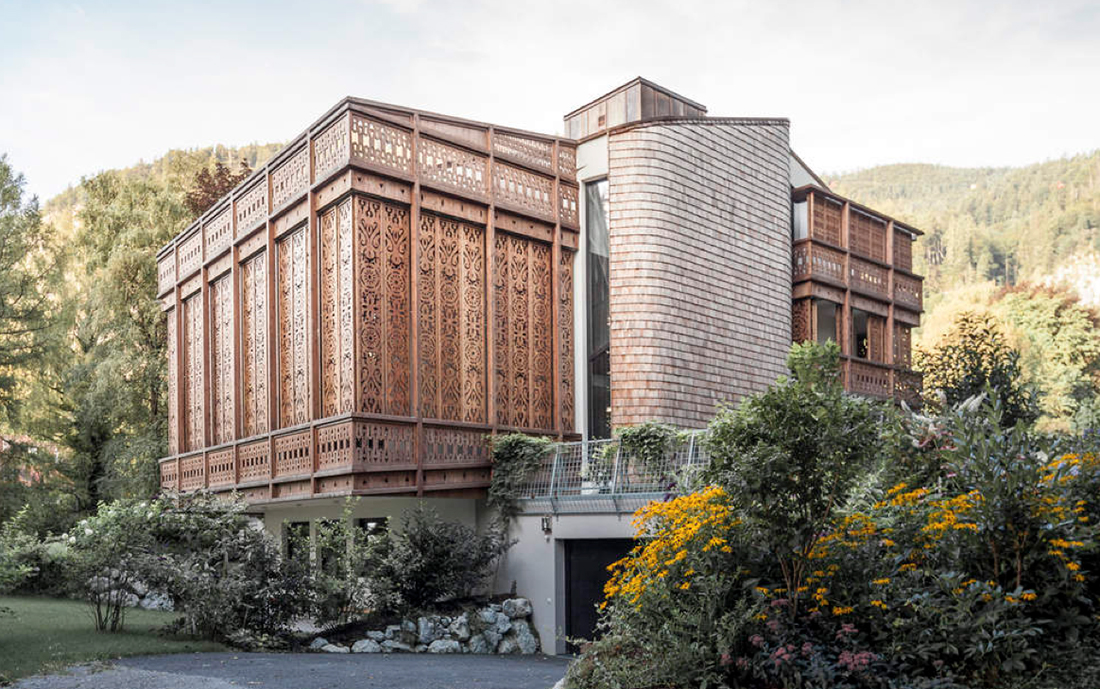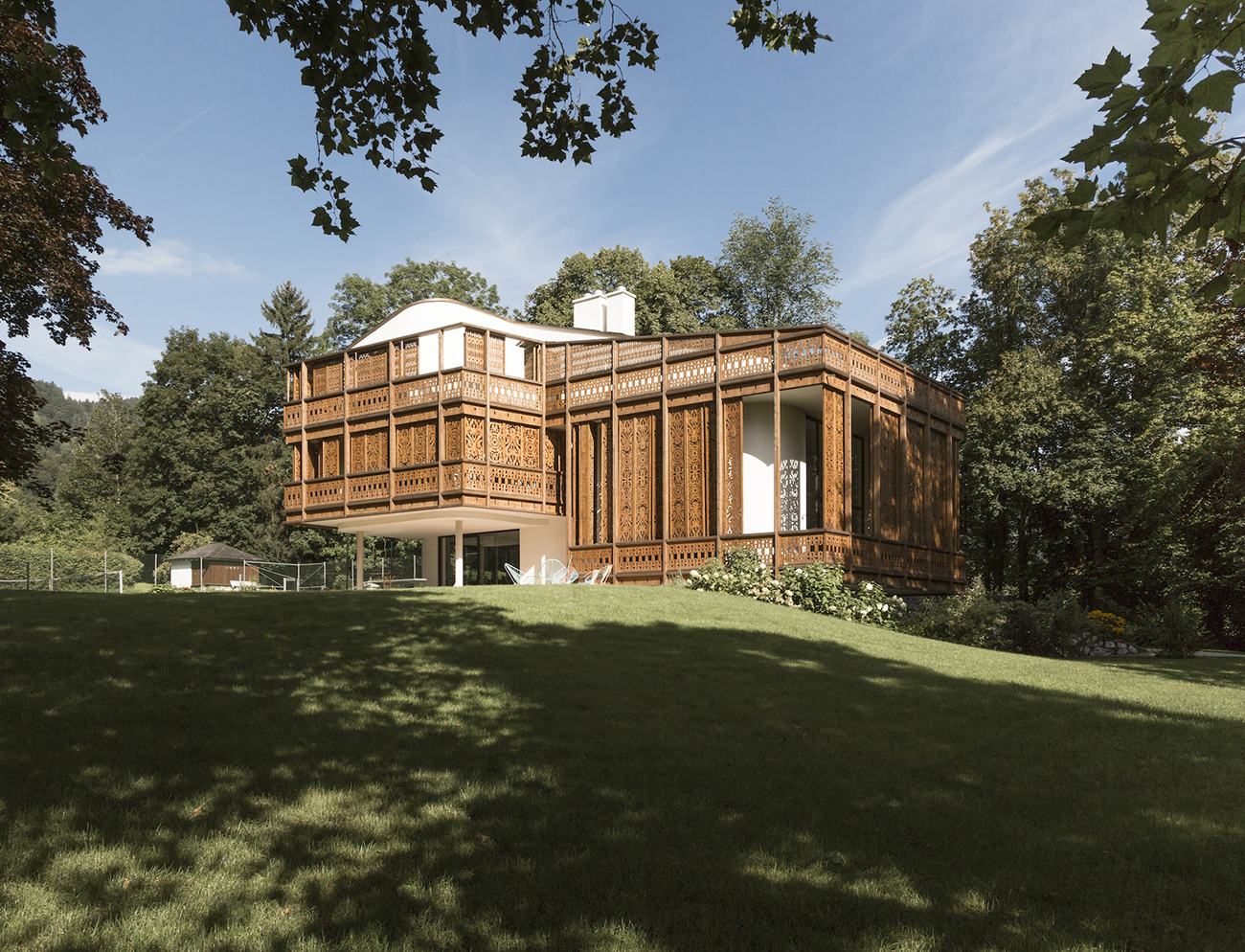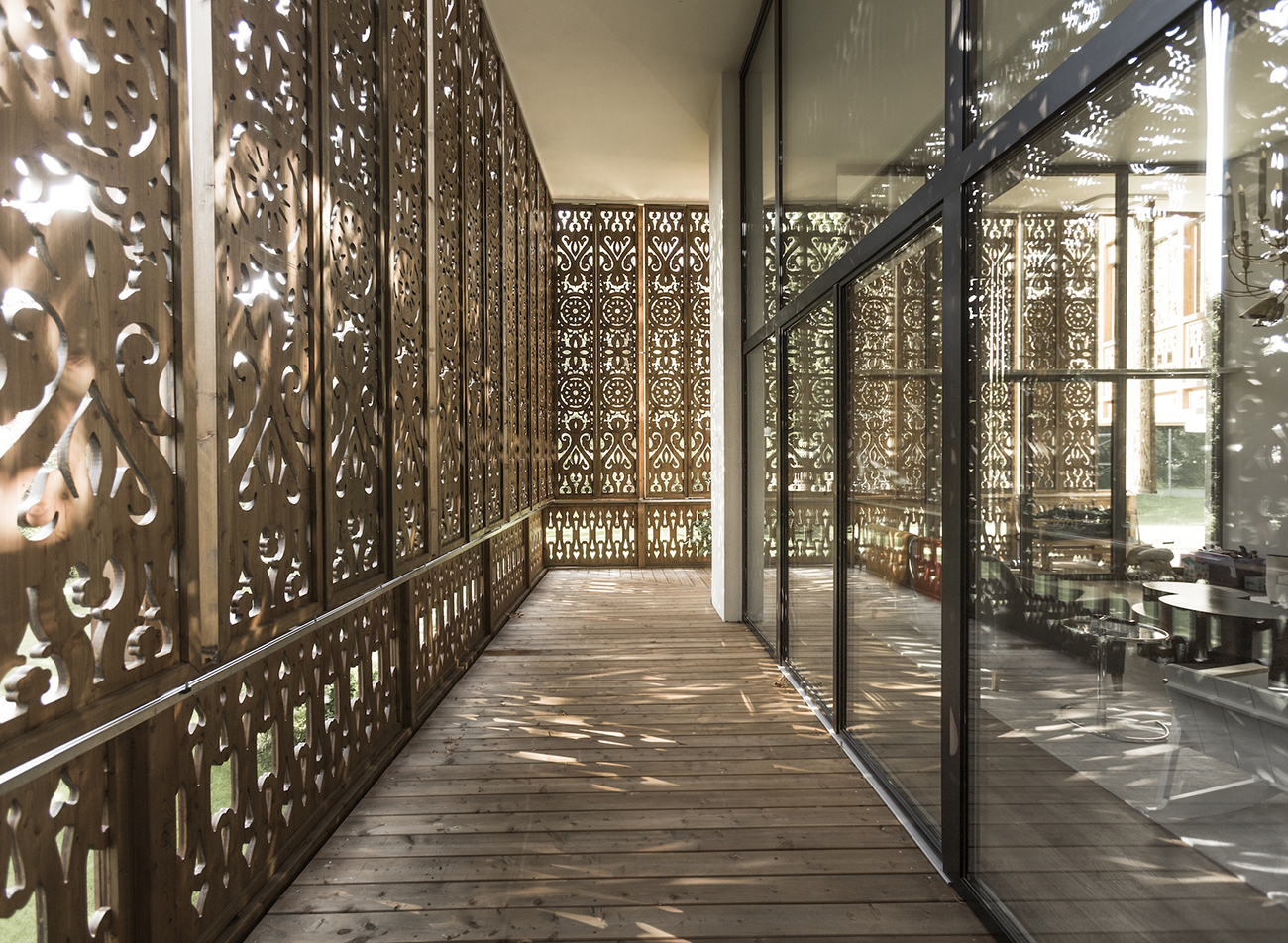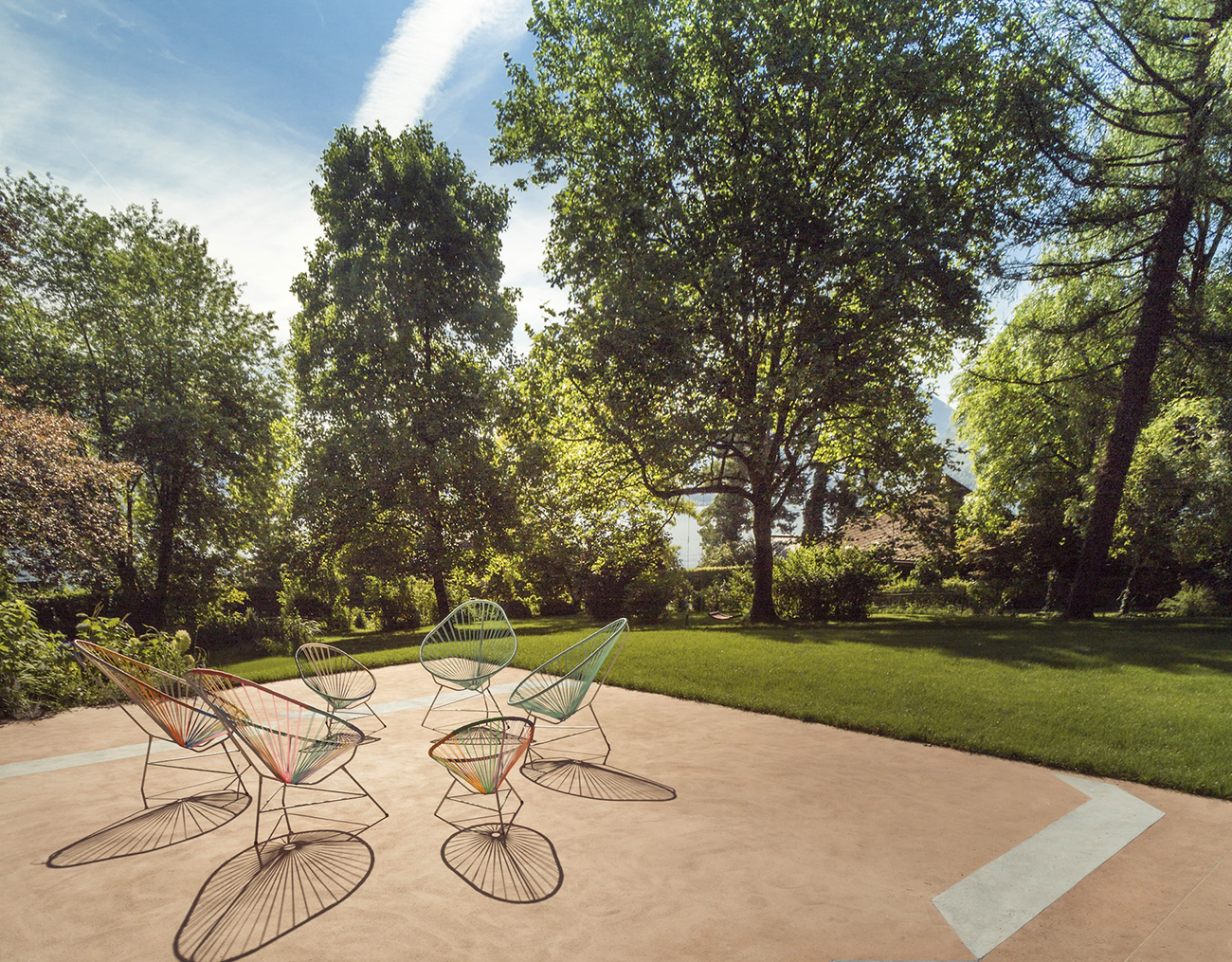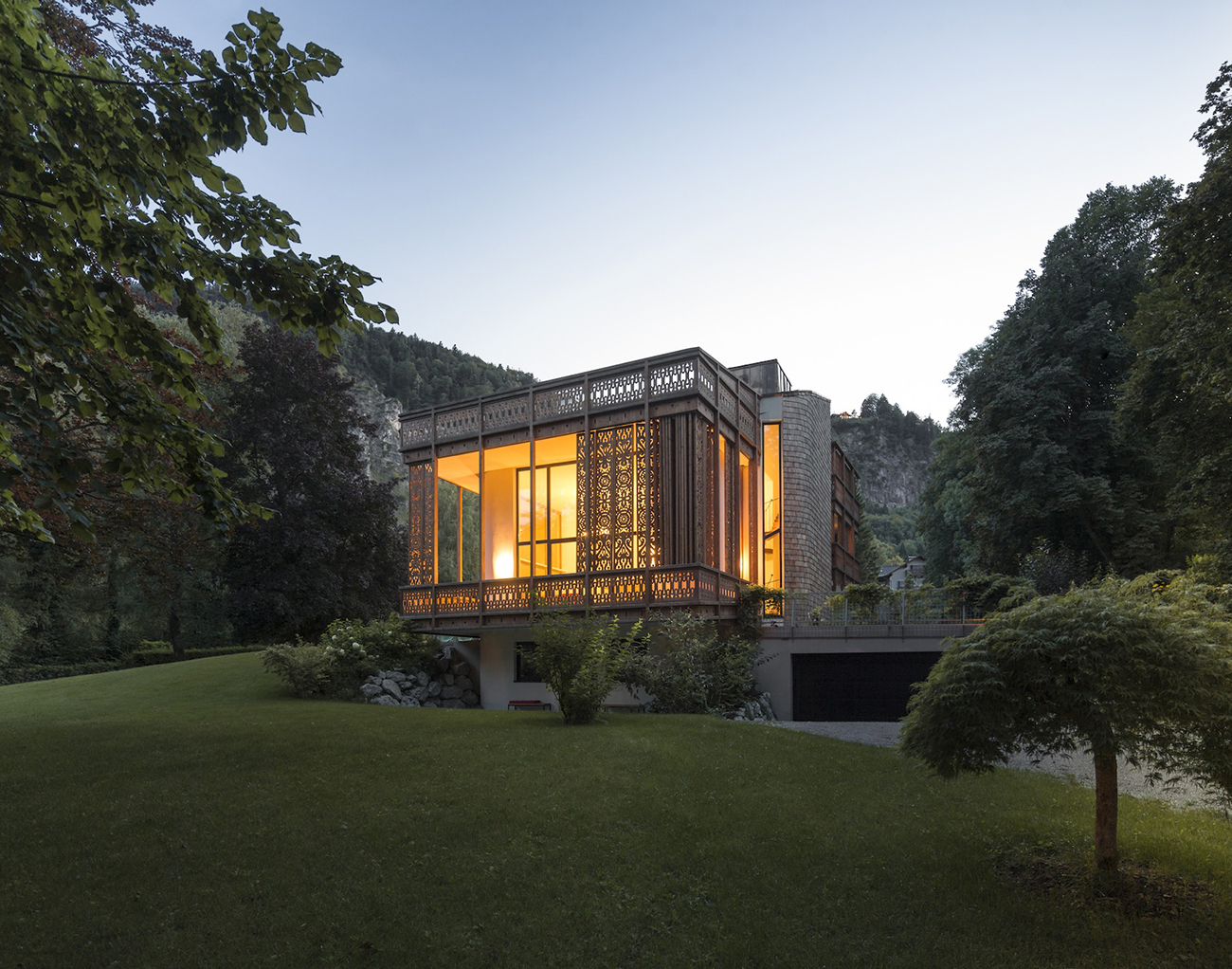Six Layers of Solitude: Villa by the Lake by Alexander Diem
/Snapshot: Austrian architect Alexander Diem layers his project Villa by the Lake with a fence, garden, wooden facade, exterior wall, social rooms, and private rooms, allowing a fuller amount of control over the universal human desire for privacy--and he does so with an aplomb that doesn’t leave culture and art out of the picture.
In a world where densely compacted cities and flooded social media sites dictate our amount of privacy while deluding us into thinking we exercise control, Alexander Diem’s new project Villa by the Lake is masterfully fabricated in a way that delivers full fledged, total control over the amount of privacy its inhabitants desire at any given moment of the day or night. The Austrian architect’s office originally turned out humanistically inclined projects that dialogue with cultural currents, though he’s recently transcended this type of subjectivity to concentrate on issues of lived experience--specifically for Villa by the Lake, the issue, theme, and the outright need, of privacy.
Let us move inductively towards this theme of privacy, for the Villa’s exterior, both its property and its facade, does not directly communicate such a theme (save its location which is of course an isolated rural Austrian countryside). To begin, the exterior at first appears distinctly un-European and brings to mind associations with Eastern architecture or at least 18th-19th century romantic assimilations of it into Western art. This impression is located most clearly in the impressive display of woodcraft that formulates the facade, upon which ornate arabesques are interlaced into moresque columns. The apse-like wing above the garage is much more abstractly Western, while its shingled exterior reflects the sylvan aesthetic appropriate to rural Austria; but nevertheless an Eastern palatial vibe takes the cake for an initial impression of the exterior.
That ornate wooden facade is in fact a highly wrought instance of a design choice that is first manifest at the periphery of the property, via the fence, and then the garden, through which people must pass to reach the villa. Six layers, to be precise, of which the fence and garden are the first two, move the visitor from areas of low privacy and high sociality to areas of increased solitude. The wooden facade is the third in this mechanic of layering, and will no doubt come to be the most recognizable of its various demarcations into public and private spaces. A closer inspection of it reveals European aspects that literally shine through onto the exterior wall, which is enveloped by way of the woodwork’s cocoon-like quality. The sun hits its cavities and shadows the interior wall with shapes symbolizing food, harvest, and fruit, in a Germanic and runic scheme that the Eastern design magnificently appropriates. The panels that formulate the facade may be slided back and forth like a Chinese or Japanese screen, allowing inhabitants that much more control over their level of seclusion.
Diem’s idea of seclusion is not solely realized in spatial demarcation. This creator does not create all of his rooms equal, assigning them an interior volume proportionate to the amount of time generally spent in them. And so, the stairs are not lent any unnecessary space in regards to ceiling height or floor space, while the living rooms occupy huge square footage as well as over five meters of ceiling heights. Implicit to this assignation of volume is a value assessment of the function of each room, and Diem’s awareness of this dynamic allows him to take full advantage of his allotted space to construct this villa with grandeur only where it is needed, and where it converses most intimately with human nature.
For an architect so attune to humanity from both a practical and aesthetic standpoint it is unremarkable that Diem incorporates artistic works into his projects, but what is remarkable is the specific manner in which art reinforces his goal of creating a controlled sense of privacy. For privacy, though highly desired, effectively isolates an individual from the also-desired sphere of human culture. Not so in Villa by the Lake, where the actual structure is adorned with artists’ work: a piece by Nick Oberthaler composes part of the terrace floor, while the main entrance door is designed by Plamen Dejanoff and hearkens back to the weighty doors through which country houses are traditionally accessed. Diem’s idea of privacy may cut off contact from the public sector, but not from the cultural pieces to be enjoyed within that public sector.
The act of moving further inside the villa is a processual transition from grand but imposing social spaces into the homely gentility of private ones. Villa by the Lake offers total control over one’s own privacy, while Alexander Diem offers Villa by the Lake itself, a home that testifies to the allure of interesting design choices coupled with the direct identification of and solution to human needs.
Photography by A.Balon

